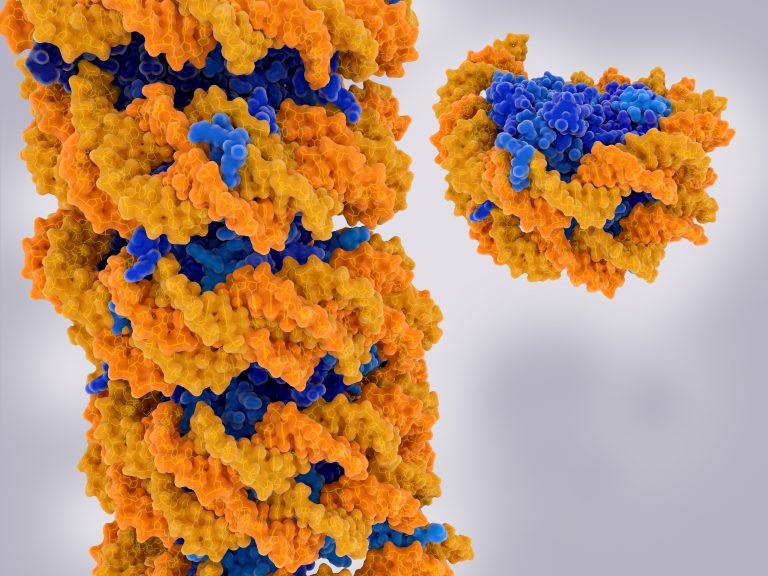
Researchers at the Children’s Hospital of Philadelphia have discovered that variants in the SMARCA5 gene, which plays a role in how DNA is coiled and stored in the cell, can cause some neurodevelopmental disorders.
There are many different types of neurodevelopmental disorders linked to intellectual disability, a large number of which are rare. Most of these conditions have a genetic basis, but for more than 50% of these individuals the cause is unknown, which makes diagnosis and treatment or symptom management difficult.
Genes involved in DNA storage and structure, such as ARID1A and SMARCA4, plus a number of others, have been implicated in such disorders before. Previous research has suggested SMARCA5 may also be involved in this way, but this is the first time pathogenic variants in SMARCA5 have been identified that cause a specific neurodevelopmental syndrome.
“Our findings expand the spectrum of neurodevelopmental disorders linked to chromatin remodeling genes,” said Hakon Hakonarson, M.D., Ph.D., Director of the Center for Applied Genomics at the Children’s Hospital of Philadelphia (CHOP), who co-led the study.
“It is very likely that this group of genetic variants may be responsible for other neurodevelopmental disorders and should be a point of focus going forward.”
Hakonarson and colleagues found pathogenic mutations in SMARCA5 in 12 individuals (6 males, 6 females) from 10 unrelated families. As described in the journal Science Advances the clinical phenotype was similar (with some variation) across all the patients and included features such as mild developmental delay, short stature and microcephaly.
The team created a genetically modified fruit fly model with dysfunctional SMARCA5 to try and find out more about the function of the protein encoded by the gene.
“We used fruit flies to study the effects of losing the function of SMARCA5 and found that this led to smaller body size, reduced the complexity of sensory neuron processes, among other defects in the larvae,” said Yuanquan Song, Ph.D., a faculty member from the Department of Pathology and Laboratory Medicine at CHOP, who co-led the study.
“In adult flies, the neural knockdown caused decreased brain size and abnormal locomotor function, and mutated SMARCA5 was unable to rescue the cells from this loss of function.”
SMARCA5 is found on chromosome 4 quite near to an area associated with a different set of mutations—4q deletion syndrome—that also cause a neurodevelopmental syndrome. The researchers found that two individuals in their cohort had an overlapping syndrome where a deletion in the 4q area of the chromosome also affected some of the SMARCA5 gene.
The syndrome described in this study seems to be less severe than some other neurodevelopmental disorders, but unlike variants in ARID, SMARC, and CHD gene families where almost all the variants occur spontaneously it can be inherited. Three of the individuals included in this study showed evidence of inheritance of the pathogenic mutation.
“Our study is the first to describe how certain germline mutations in SMARCA5 are responsible for a spectrum of neurodevelopmental delays,” said first author Dong Li, Ph.D., a research scientist at the Center for Applied Genomics at CHOP.
“Apart from identifying patients with such germline variants for the first time, our extended translational modeling study efforts to determine the underlying functions for these variants further elucidated their clinical relevance.”













